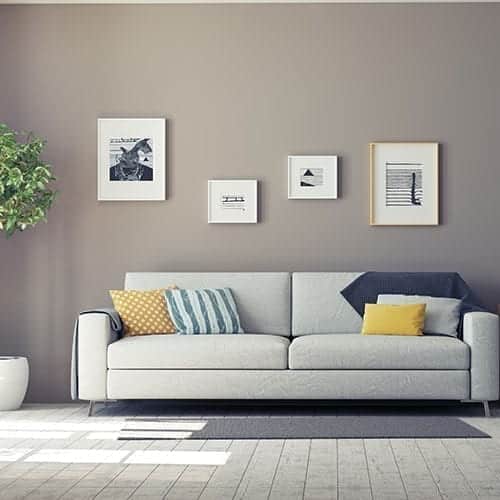
Why You Should Paint Your Home More Than One Color
Does that mean you need to paint the rest of the rooms to match the existing color you approve of? Or maybe you know immediately that you cannot live with any of the existing colors. You know you need to paint every room in the house. You can choose to go with one color throughout the house or choose a different color for each room.
When working with one color throughout the house, you could come across some problems including:
- No true neutral colors
- Colors change with lighting
- Matching paint tone to room decor
No True Neutral Colors
One reason designers might choose to use one color for an entire house is that the concept of using a neutral tone relates to thinking that there are tones that are warm and cool simultaneously that go pleasingly with virtually any other color. This is simply not true. Even apparent neutral tones have complex undertones based on more than one color influence. They might be more likely to be both cool and warm rather than being neither, but that makes it more complex rather than simpler. Consideration must be given based on which of the undertones are more prevalent.
Colors Change with Lighting
We think about the color being a static absolute when in fact the perception of color in every circumstance changes according to the source of light, the angle that it travels and the placement of the surface. There are multiple ways light enters and affects our home surfaces. This means that color tone perception changes with every angle of your home’s architecture and is further affected at different times of the day and by various locations in the house. Between the amount of natural light present, the artificial ambient light coming from the floor, ceiling or wall, and the light coming in from other rooms or in the window, that neutral color shared on every wall in every room will take on completely different tones and lightness. Your “color flow” will be altered regardless.
Matching Paint Tone to Room Decor
It’s not just walls and other hard, flat surfaces that are affected by lighting. The texture and raw material that objects are made from can affect how that light reflects and is perceived. This means that even though various items of décor have been selected from the same dye or color chip, how they look in various lighting around the house will vary, as well.
Multiple Colors Solve the One-Color Problems
It’s unrealistic to expect any one color with complex undertones that changes its look throughout the house to stay compatible in combination with the way décor reacts to varying light. The solution is to use more than one color. This doesn’t imply that your palette should resemble a circus of primary colors splashed throughout the house. Choosing one main color and varying its tints and shades throughout the house can adjust how a color is perceived from room to room or corner to corner.
You might elect to try to fool the eye using similar tones to appear like one main tone throughout the house, or you could experiment with using different tones to achieve other artistic effects such as:
- Themes and artistic expressions
- Define zones and spaces
- Enhance architectural features
Themes and Artistic Expressions
Creating a theme in a room can include using specific colors that evoke an emotion or story. A family oceanside vacation can inspire various blues, teals and sandy colors. Blending colors using an ombre style can add further storytelling or drama. These techniques can take advantage of changing lighting for additional color and drama. This can result in a very personalized space.
Define Zones and Spaces
Especially large rooms can sometimes feel barren, stark and sterile. You can create an intimate, cozy space within a larger room by using a border of subtle or dramatic color change in any part of the painted surface. A high ceiling can be overcome by extending the ceiling color down the wall to form a lower ceiling line or even all the way down to a chair rail. A wide wall can be split up by placing a quaint sitting area confined to a separate colored area.
Enhance Architectural Features
Accentuate architectural features using lighter or darker tones, highlighting lit or shadowed surfaces and emphasizing lines and shapes. A lack of interesting architecture in a room can be remedied using cleverly-placed multiple shades of the same color to suggest shapes or angles in plain walls.
When tackling a large project such as painting multiple rooms in your home, avoid the inconvenience and disruption of family life. Finding a skilled and experienced paint contractor can be a godsend, saving time as well as money. Get the job done quickly and correctly the first time by choosing the right people to hire. Nevada Painting Company can help you reach your style goals for your home in a painless, affordable and timely way in Arizona and Nevada. Call us or go online today to schedule an appointment.
